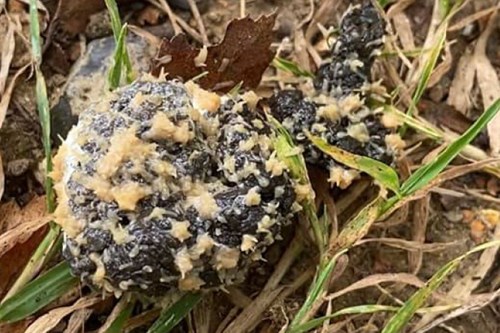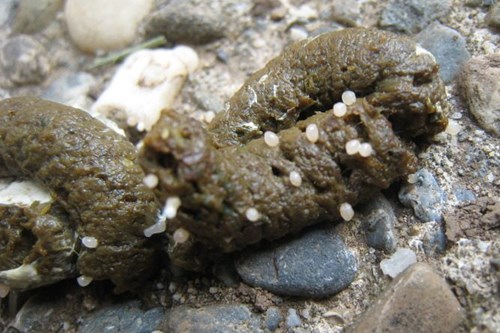Tapeworm (Davainea proglottina, Raillietina spp) In Chickens and other poultry

tapeworm in poultry dung:

Symptoms
Tapeworm anchor to the wall of the small intestine and affect birds by removing nutrients resulting in stunted growth/weight loss, nutrition deficiencies, and increased risk of infection or disease. Davainea proglottina, Fowl Tapeworm is one species which can damage the intestine leading to peritonitis. If infection spreads to head and sinuses, affected chickens may present with neurological signs such as torticollis (aka wry neck).
DETECTION & Treatment
Tapeworm often present like grains of rice or flecks of white in the dung, sometimes moving with a sucker action.
We do see tapeworm eggs in a worm egg count, but the way that they are excreted in packets in the dung, rather than being evenly spread as with other parasites, makes a worm egg count not a definitive test for tapeworm.
Only a vet is able to prescribe a suitable treatment for this parasite; they will usually advise either double strength dose of Flubenvet or Praziquantel 7.5 mg/kg on cascade POM-V to be repeated in 2-4 weeks.
